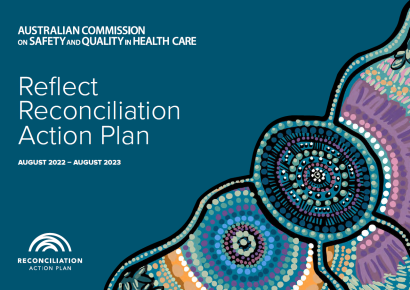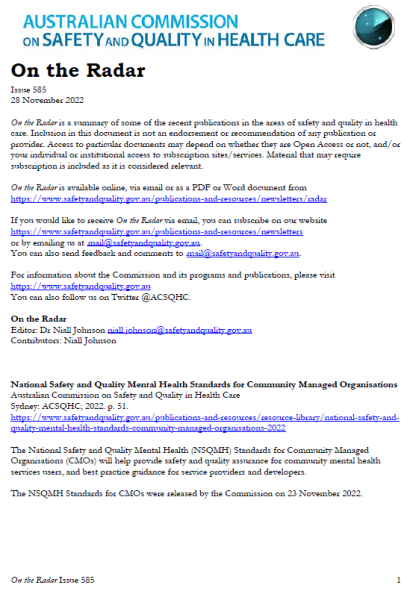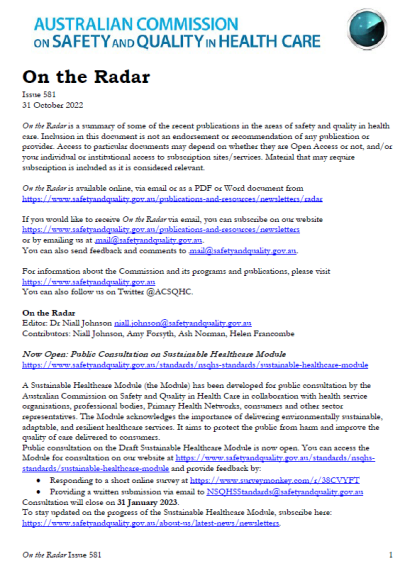The National Safety and Quality Health Service (NSQHS) Standards support the right of people with intellectual disability to equitable health care. This page provides further resources to assist those with intellectual disability and their family and supporters to understand and advocate for equitable health care, as part of the Commission’s support for improved health care for people with intellectual disability.
Antimicrobial resistance (AMR) is a serious threat to human health and patient safety. Hundreds of people in Australia die each year as a result of AMR.
The Commission's Reconciliation Action Plan (RAP) is a first step towards reconciliation and importantly, improving the safety and quality of health care for Aboriginal and Torres Strait Islander peoples in Australia.
From 1 January 2023, the Australian Commission on Safety and Quality in Health Care (the Commission) became the custodian of a range of Quality Use of Medicines (QUM) functions, expanding our role in QUM stewardship. This follows the redesign of the Quality Use of Diagnostics, Therapeutics and Pathology (QUDTP) Program outlined in the 2022–23 Federal Budget.
Status updates for each function can be found below.
The National Safety and Quality Health Service (NSQHS) Standards support the rights of people with intellectual disability to equitable health care. People with intellectual disability experience significant barriers in accessing safe and quality care evident through a higher mortality rate, increased incidence of preventable illness and more frequent hospital admissions.
In this section, you will find guidance and resources for implementation of the NSQHS Standards, to support healthcare rights and provision of inclusive health care.
A number of related resources have been identified which are relevant to the Stillbirth Clinical Care Standard.
A number of related resources have been identified which are relevant to the Stillbirth Clinical Care Standard.
Developing and using shared decision making tools can help clinicians to implement shared decision making in clinical practice.
Being actively involved in your health care and working in partnership with your healthcare providers can help ensure that you get the care that is right for you.
Person-centred care must recognise and respect individual needs, beliefs and culture. Understanding the diversity of consumers seen in your organisation can help you design systems that support staff to better meet their needs.
Summary of accreditation outcomes and lessons learnt from the assessment of general practices against the RACGP Standards for general practices (5th edition) and the RACGP Standards for point-of-care testing (5th edition).



